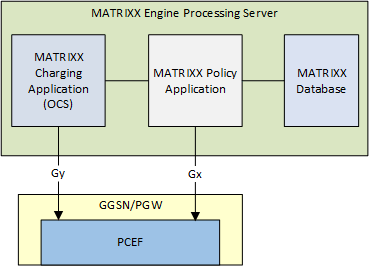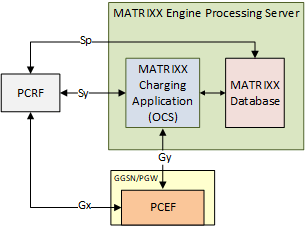3G/4G Policy Overview
The 3G/4G MATRIXX Policy Application provides the business logic to support real-time policy decisions and rules. It allows charging and network quality of service (QoS) to be flexibly and dynamically linked to customer, service, and network parameters.
MATRIXX Policy Application and MATRIXX Charging Application are tightly coupled, providing a single point of configuration for charging and policy. They leverage the same real-time core engine, access the same centralized subscriber reference data, balance and usage counters, and status information. MATRIXX Policy Application includes a Policy and Charging Rules Function (PCRF).
- Spending and Usage Control
- Personalized Spending Control
- Fair Usage
- Bill Shock
- QoS Control
- Subscriber Speed Tiers
- Service Tiers
- QoS Provisioning per Network Type
- Redirect and Service Pass Upsell
- Group/Shared Plans
- Time of Day Control
- Happy Hours
- Parental Control
- Service Control during School Hours
- VoLTE or ViLTE over AF
- Emergency Calls over the IP Media Subsystem (IMS)
- Use MATRIXX Policy Application in MATRIXX Engine to communicate over the Gx reference point to the policy and charging
enforcement function (PCEF). Figure 1 shows the policy components of a MATRIXX environment using a PCRF internal to the MATRIXX Engine processing server.
Figure 1. Using the MATRIXX Policy Application for Policy Decisions  Note: MATRIXX Policy Application can integrate with one or more PCEFs simultaneously to support multi-vendor PCEFs for different kinds of networks.
Note: MATRIXX Policy Application can integrate with one or more PCEFs simultaneously to support multi-vendor PCEFs for different kinds of networks. - Use one or more PCRFs external to the MATRIXX Engine. Those PCRFs communicate with the MATRIXX Charging Application (OCS) using
the Sy reference point, and with the MATRIXX SPR using the Sp reference point.
Figure 2 shows the policy components of a MATRIXX environment using an external PCRF.
Figure 2. Using an External PCRF for Policy Decisions 
For information about the supported versions of the Sy and Gx reference points, see the discussion about working with the Diameter protocol in MATRIXX Diameter Integration.
Policy Selection During Rating
Whether you use an internal or external PCRF, you can define unique policy profiles composed of different policy components for each application. A product offer can contain multiple policy components, and multiple product offers can be applied when determining the policy. All policy components from one or more product offers are applied, and policy messages are constructed from the set of policy profiles selected during rating.
- PCC rule names
- PCC rule group names
- Event triggers
- Bearer Control Mode
- Quality of Service (QoS)
- Default EPS Bearer QoS
- Supported Features
Each item is selected independently, so one item definition can come from one profile, and another from a different profile. For example, the policy message can contain the Bearer Control Mode from one policy profile and the QoS from a different policy profile.
Sy policy messages (SLAs or SNRs) include the union of the policy counters in all applicable policy profiles. If two or more profiles include the same policy counter name, the status values are compared. If the status values are different, only one of the status values is used and a warning is logged indicating which value was used.
Extending Policy MDCs for Custom AVPs
MATRIXX Charging Application includes pre-configured MDCs that are mapped to policy messages. MDC definitions
can be extended, and the mappings customized to support custom AVPs. Each policy
session object includes an Attr field of type
MtxPolicySessionExtension that includes any custom policy session fields. To save
these field values throughout Gx and Sy policy sessions, you can map fields in the
incoming network message to these Attr fields, or to any custom
MtxPolicySessionExtension MATRIXX Data Container (MDC) fields. You
can then set up rating based on that value. For more information about custom MDCs,
see the discussion about configuring MDCs and MDC field extensions in MATRIXX Configuration. For information about AVP to MDC mapping, see
Diameter Integration. For more information about policy session
mapping, see My MATRIXX Help.
